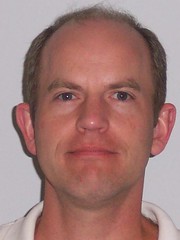[Las Vegas, Nevada USA]
Charging up 2007 International CES
With CeBIT 2007 starting this week on Thursday, March 15, in Hannover, Germany, relevance is fading for the final CES post I promised (see Solar Camera defends Solar Gadget Crown) back in January.
The crowded field of solar charger and panel manufacturers at CES this year was lead by ICP Solar Technologies Inc. (OTC:ICPR) and Solar Style Inc, a subsidiary of Universal Communication Systems Inc. (OTC:UCSY).
First, a solar charger consists of a solar panel, a charge controller, and a target battery. The solar panel captures and converts sunlight into electricity, and the charge controller regulates and optimizes the direct current (DC) generated by the panel to charge, but not overcharge, the target battery.

The Sunsei product line from ICP Solar and the sister Coleman branded line of portable solar chargers launched at CES focus on direct trickle charging the primary battery of a car, RV (recreational vehicle), or boat for battery maintenance or battery recharging purposes. I first learned of battery maintenance at a local Volkswagen car dealership. Volkswagen was using small solar panels mounted on the front windshield and plugged into the 12V battery jack or cigarette lighter to prevent idle vehicles on the lot from draining the car battery. Electronics in contemporary cars use small amounts of power even when turned off and parked.
ICP Solar produces amorphous silicon (a-Si) based solar panels at their own production facility located in the United Kingdom. Per a company representative, ICP Solar claims to source polycrystalline solar cells from Q-Cells AG for solar panels such as the 65W (Watt) Sunsei SolarCharger SE-4000, 100W SE-6000, and 130W SE-8000.

By contrast, solar chargers from Solar Style target handheld devices like mobile phones, MP3 players, gaming units, GPS, and notebook computers through a two step process. Solar Style products charge an integrated lithium ion or lithium polymer battery which in turn recharges the target mobile device battery. Solar Style models include chargers like the SC017 (called the SolarolaTM at CES) that have a RAZR-like flip phone form factor with monocrystalline solar cells mounted inside both halves of the clamshell. Similar products are bundled with a range of connector cables for the most popular mobile phone brands.
Solar Style claimed to have two fundamental patents for their Battery On Board approach with lithium polymer batteries and for handheld solar charging devices. I was unable to confirm this claim with a quick Google Patents search for “solar charger battery”. However, this did reveal patents co-invented by ICP Solar CEO Sass Peress and Japanese notables Fuji Photo Film Co., Ltd. and Sanyo Electric Co., Ltd. Mr. Peress solar blogs about Sunbits at http://www.sassperess.com/ sponsored by ICP Solar.

Given the fragile financial condition of Solar Style’s parent company, it’s not surprising they have an arrangement with a competitor (or their manufacturing partner?), AOC Solar, Co., to sell identical products branded AOC Solar and produced at the same Chinese factory. While AOC Solar has an eclectic lineup of solar powered products, their Solar Lighting Complete Kit series attracted my attention.
The Solar Lighting Complete Kits range from 2.5W to 60W and include everything needed to install or experiment with off grid lighting. Kit contents vary with the wattage rating; the 10W Solar Lighting Complete Kit includes a 10W solar module with a built in charge controller, a 7W CFL Lamp, two (2) 0.8W LED Lamps, a 12 Volt / 8AH (Amp-Hour) Battery, and essential accessories including a 10m cable, switch, E27 base for the CFL, and fuse. The 10W Solar Lighting Complete Kit, Model: PVK-SLS-10W, has a Manufacturers Suggested Retail Price (MSRP) of $241.20 USD.
AOC Solar developed the kits for solar energy education, but they have instead found significant interest from people living off grid without electricity in impoverished nations.
And the s25 server at Site Meter has been bogged down by a particular site with a promotion since last Thursday, so I have been unable to data mine my Blog traffic. I am missing this motivational information.Labels: AOC Solar, ICP Solar, Solar Style
























